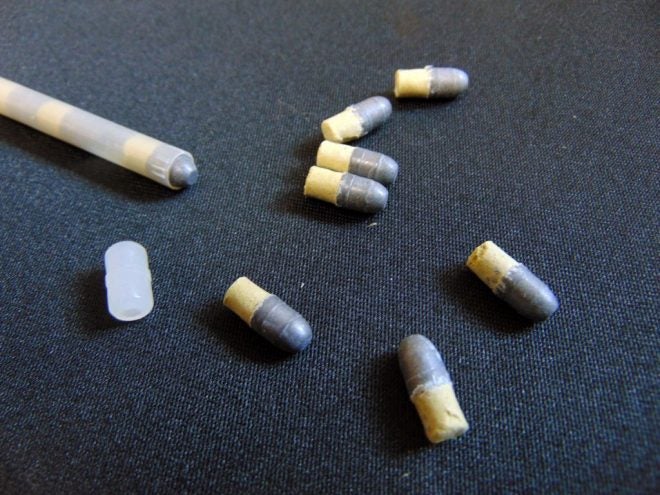The caseless, tiny .22-caliber lead projectile fired from the Daisy V/L rifle of the 1960s used a nitrocellulose-based propellant which was molded, hardened, and affixed to the rear of the bullet—it was activated by a burst of compressed air. Once the projectile and propellant were mated together, the final product was a type of caseless ammunition not much larger than two pencil erasers stacked on top of each other.
While innovative, this new caseless ammunition did have a setback: the propellant could easily flake off of the projectile. With traditional .22 ammo, you could simply dump a box of cartridges into your pocket – something that was not possible with the VL’s ammo. The jostling motion would separate the nitrocellulose from the lead, rendering the ammunition unusable.
To solve this problem, Daisy patented a specially-designed ammunition package and container in December 1968. The rounds were stacked on top of one another, 10 to a plastic tube. The tubes, in turn, were stored 10 to a package. One end of the tube was heat sealed and the other was closed with a removable plastic plug.
 Your Privacy Choices
Your Privacy Choices
